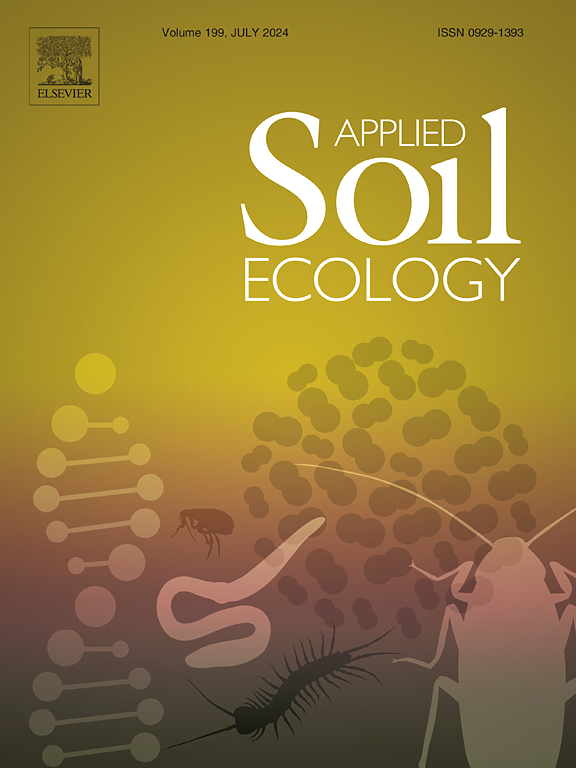Stability of nitrogen-cycling microbial communities and impact on microbial nitrogen function under different land use practices
IF 5
2区 农林科学
Q1 SOIL SCIENCE
引用次数: 0
Abstract
Land use management practices can strongly influence microbial community composition. However, it remains unclear whether land uses affect community stability, especially for the entire nitrogen (N) transforming community whose stability is the basis of soil microbiome N-functioning. Using metagenomic sequencing, this study investigated the co-occurrence patterns of N-cycling microbes in forest, upland, and paddy soils and their relationship with N-functional genes. The co-occurrence network structures of soil N-cycling community for these three typical land uses were completely different, with the most complex interactions observed in paddy soils (e.g. more nodes and edges, and higher average clustering coefficient, average degree, and relative modularity). The N-cyclers stability (robustness and negative: positive cohesion) in paddies was significantly higher than in uplands and forests, and lowest in forests. A random forest model revealed that soil moisture and available N emerged as the primary predictors of N-cyclers stability, with stability increasing as these factors increased. Moreover, community stability of soil N-cyclers was strongly associated with N functions. Specifically, N-cyclers stability was positively linked to multiple dissimilatory N-cycling genes and negatively correlated with several N assimilatory genes. In conclusion, our results demonstrate that land use practices significantly affect the stability of N-cycling microbial communities, which in turn influences microbial N-functionality.
不同土地利用方式下氮循环微生物群落的稳定性及其对微生物氮功能的影响
土地利用管理方法会对微生物群落的组成产生很大影响。然而,土地利用是否会影响群落的稳定性,尤其是整个氮(N)转化群落的稳定性,而氮转化群落是土壤微生物组氮功能的基础,这一点仍不清楚。本研究利用元基因组测序技术研究了森林土壤、高地土壤和水稻田土壤中氮循环微生物的共生模式及其与氮功能基因的关系。这三种典型土地用途的土壤氮循环群落的共生网络结构完全不同,其中水稻田土壤中的相互作用最为复杂(如节点和边更多,平均聚类系数、平均度和相对模块化程度更高)。水稻田的 N 循环体稳定性(稳健性和负:正内聚力)明显高于高地和森林,而森林的 N 循环体稳定性最低。随机森林模型显示,土壤湿度和可利用氮是预测氮循环体稳定性的主要因素,稳定性随着这些因素的增加而增加。此外,土壤氮循环生物群落的稳定性与氮功能密切相关。具体来说,氮循环体的稳定性与多个分解氮循环基因呈正相关,而与多个氮同化基因呈负相关。总之,我们的研究结果表明,土地利用方式会显著影响氮循环微生物群落的稳定性,进而影响微生物的氮功能。
本文章由计算机程序翻译,如有差异,请以英文原文为准。
求助全文
约1分钟内获得全文
求助全文
来源期刊

Applied Soil Ecology
农林科学-土壤科学
CiteScore
9.70
自引率
4.20%
发文量
363
审稿时长
5.3 months
期刊介绍:
Applied Soil Ecology addresses the role of soil organisms and their interactions in relation to: sustainability and productivity, nutrient cycling and other soil processes, the maintenance of soil functions, the impact of human activities on soil ecosystems and bio(techno)logical control of soil-inhabiting pests, diseases and weeds.
 求助内容:
求助内容: 应助结果提醒方式:
应助结果提醒方式:


